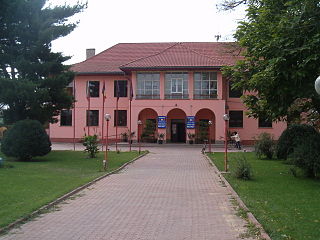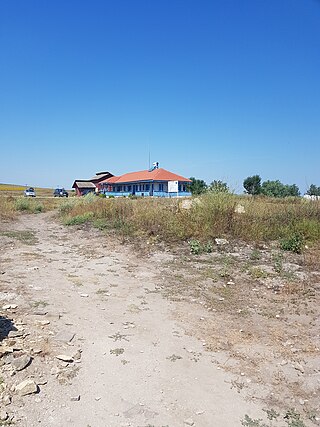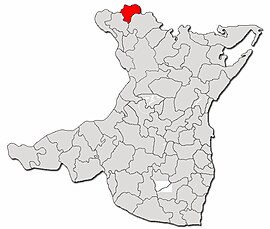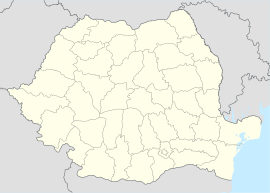
Cernavodă is a town in Constanța County, Northern Dobruja, Romania with a population of 15,088 as of 2021.

Ovidiu is a town situated a few kilometres north of Constanța in Constanța County, Northern Dobruja, Romania. Ovidiu is quite small, with a population of 13,968 as of 2021, and many wealthy inhabitants of Constanța retire there. It officially became a town in 1989, as a result of the Romanian rural systematization program.

Fetești is a city in Ialomița County, Muntenia, Romania. It is located in the Bărăgan Plain, on the Borcea branch of the Danube. Fetești has the second largest population in Ialomița County, after Slobozia.

Murfatlar is a town in Constanța County, Northern Dobruja, Romania. It officially became a town in 1989, as a result of the Romanian rural systematization program.

Carașova is a commune in Caraș-Severin County, Romania. It is known especially for its geographical placement and for the origin of its Croatian inhabitants, the Krashovani. The population of the commune numbered 3,110 people at the 2011 census.

Bechet is a town in Dolj County, Oltenia, Romania, on the river Danube, opposite the Bulgarian city of Oryahovo.

Svinița is a commune in Mehedinți County, Romania, located on the Danube. It is composed of a single village, Svinița. In 2011, its population numbered 928 people and was mostly composed of Serbs. It is one of four localities in the county located in the Banat.

Săcele is a commune in Constanța County, Northern Dobruja, Romania. Located in the eastern part of the county at a distance of 47 km from Constanța and 30 km from the nearest town Năvodari, it has an area of 103 km2.

Cuza Vodă is a commune in Constanța County, Northern Dobruja, Romania.

Oltina is a commune in Constanța County, Northern Dobruja, Romania.

Ghindărești is a commune in Constanța County, Northern Dobruja, Romania, including the village with the same name.

Castelu is a commune in Constanța County, Northern Dobruja, Romania.

Sărățeni is a commune in Mureș County, Transylvania, Romania. It became an independent commune when it split from the town of Sovata in 2004. The commune, composed of a single village, Sărățeni, has an absolute Hungarian majority (82%).

Ostrov is a commune in Tulcea County, Northern Dobruja, Romania. It is composed of two villages, Ostrov and Piatra.

Murighiol is a commune in Tulcea County, Northern Dobruja, Romania. It is composed of seven villаges:

Lovrin is a commune in Timiș County, Romania. It is composed of a single village, Lovrin. It also included three other villages – Gottlob, Tomnatic, and Vizejdia – until 2004, when they were split off to form Gottlob and Tomnatic communes.

Iecea Mare is a commune in Timiș County, Romania. It is composed of a single village, Iecea Mare, and was part of the commune of Cărpiniș until 2004, when it was split off.

Sânmihaiu Român is a commune in Timiș County, Romania. It is composed of three villages: Sânmihaiu German, Sânmihaiu Român and Utvin. It lies on the canalized section of the river Bega, southwest of Timișoara.

Uivar is a commune in Timiș County, Romania. It is composed of four villages: Pustiniș, Răuți, Sânmartinu Maghiar and Uivar. Two other villages, Otelec and Iohanisfeld, which had been part of Uivar commune since 1968, were split off in 2008 to form Otelec commune.

Istria is a commune in Constanța County, Northern Dobruja, Romania.























